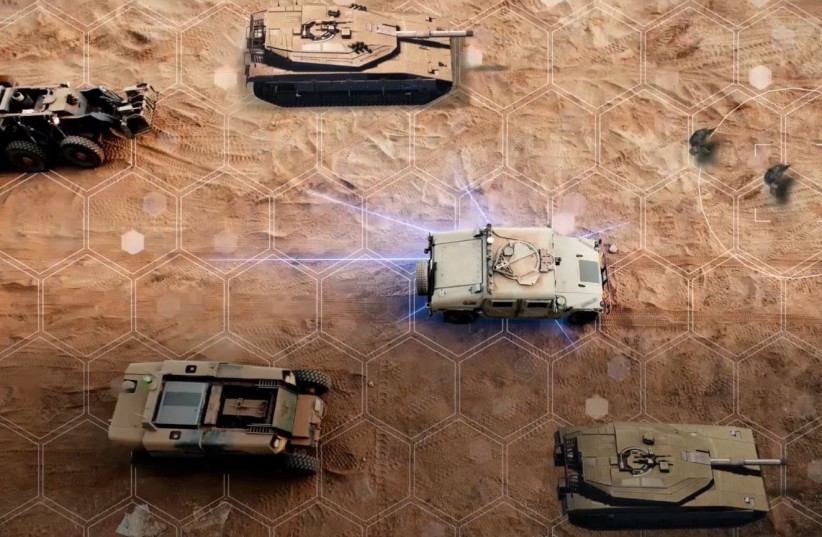Israel Aerospace Industries (IAI) has unveiled a new passive high-performance gunfire detection system (GDS), the OTHELLO-P, at the Eurosatory Exhibition in Paris.
With integrated artificial intelligence processing and extended SWIR electro-optics and acoustic sensors, the OTHELLO-P system is a compact sensor designed to immediately detect, geo-locate and alert troops to incoming gunfire from small arms, snipers, machine guns, RPGs, subsonic munitions and indirect fire.
The lightweight and low-power passive solution can be used in all weather conditions, in open and urban areas as well as during the day or night and is installed in vehicles or in buildings, supporting troops on the battlefield who will see the threat on a tablet. With 360-degree coverage, it provides short and accurate sensor-to-shooter loop closing.
What it's good for
It “increases survivability and the ability of troops to return fire,” said Asher Abish, Director of Marketing at IAI-ELTA’s Land Division, adding that “it’s a smart solution that changes the way the battlefield can be run and managed. It will allow the good forces to dominate the fight.”

The integration of optical sensors allows the system to identify muzzle flashes while the acoustics sensor provides identification of sounds of the bullet's explosion as well as the shock waves it causes.
Displaying the defense
Eurosatory, Europe’s largest defense exhibition, takes place as Ukraine continues to push back invading Russian forces. Israeli defense officials have said that the war in Ukraine as well as other global conflicts have led countries around the world to increase their defense budgets and look to Israel for military-related purchases.
Military exports by Israel brought in $11.2 billion dollars last year, with 41% attributed to sales in Europe - an increase from 30% in 2020.
While the system was not developed because of the war in Ukraine, Abish said that the war “assured” the company that militaries need to have a system that can detect incoming fire.
According to him, “there is a lot happening” on the battlefields in Ukraine, from loitering munitions to snipers to tank fire and more. But troops in many militaries, including in Ukraine, lack the proper sensors in order to obtain a full operational picture.
“One of the biggest problems we have is getting situational awareness. When you know where the threat is coming from, you can eliminate it,” Abish said.
“This isn’t happening today in Ukraine. Tanks are being hit by RPGs, people are being shot by snipers in locations where you don't know where they are and can’t return fire.”
Asher Abish, Director of Marketing at IAI-ELTA’s Land Division
And with the OTHELLO-P, “if someone is shooting at me, I’ll know where they are shooting from and be able to identify the location,” he said.
While IAI would not go into detail regarding potential clients, the marketing director said that because the company has already seen significant interest in the system, there is a limited number of them available for demonstrations.
The system was developed at IAI’s Innovation Center, which develops new and advanced technological capabilities and then integrates them into the company's existing and future projects.
“The unique nature of IAI’s Innovation Center is based on accelerator format, operating as a start-up, that allows the company’s engineers a path to develop advanced technologies and reach MVP [minimum viable product] or POC [proof of concept] within 13 weeks,” according to Eytan Eshel, IAI Chief Technology Officer.
“In the last two years, innovators have developed initiatives in robotics, autonomous vehicles, artificial intelligence, space and satellites, some in cooperation with external startups, and these have been integrated into the company’s product lines.”
